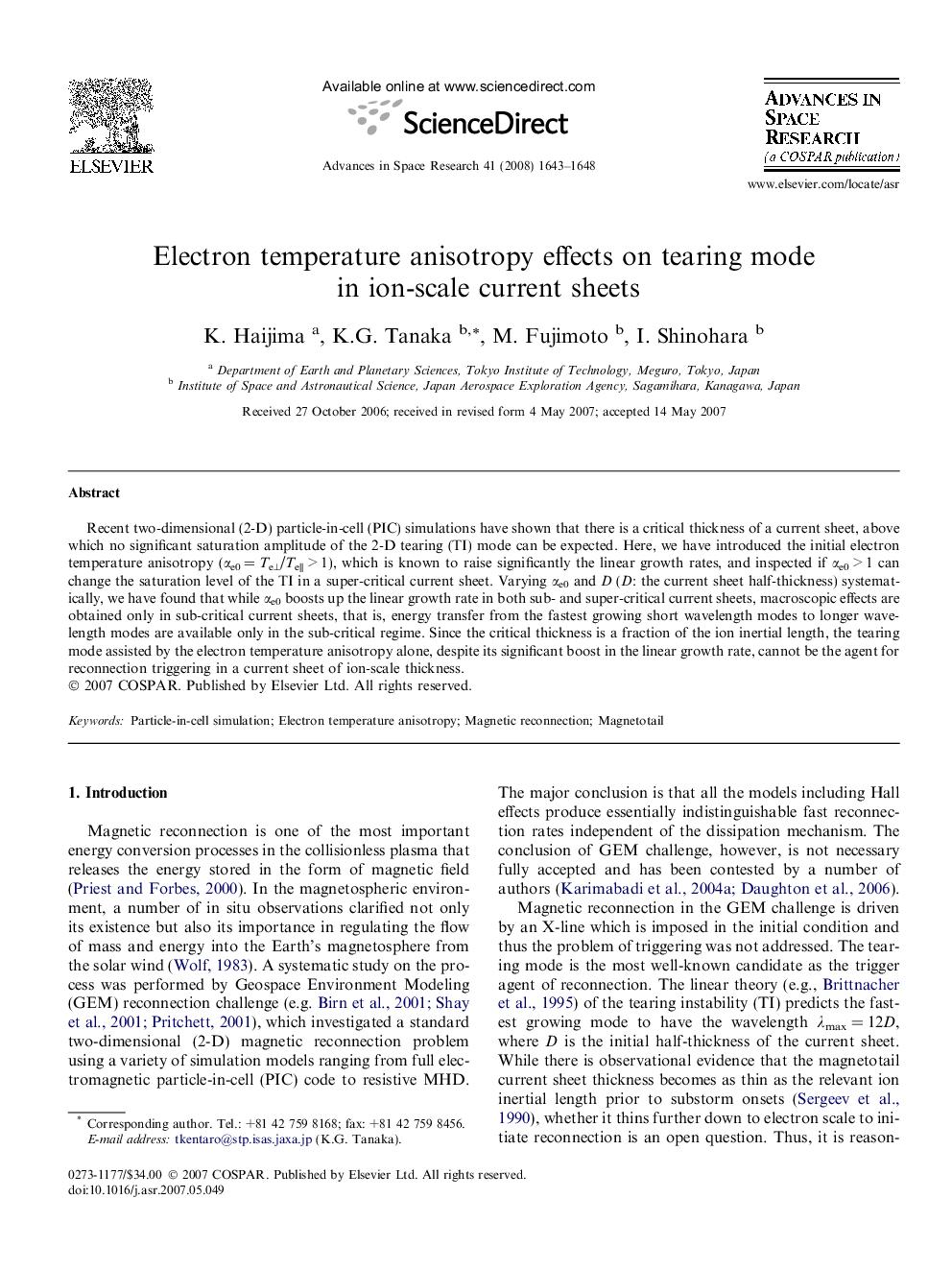| کد مقاله | کد نشریه | سال انتشار | مقاله انگلیسی | نسخه تمام متن |
|---|---|---|---|---|
| 1766394 | 1020148 | 2008 | 6 صفحه PDF | دانلود رایگان |

Recent two-dimensional (2-D) particle-in-cell (PIC) simulations have shown that there is a critical thickness of a current sheet, above which no significant saturation amplitude of the 2-D tearing (TI) mode can be expected. Here, we have introduced the initial electron temperature anisotropy (αe0 = Te⊥/Te|| > 1), which is known to raise significantly the linear growth rates, and inspected if αe0 > 1 can change the saturation level of the TI in a super-critical current sheet. Varying αe0 and D (D: the current sheet half-thickness) systematically, we have found that while αe0 boosts up the linear growth rate in both sub- and super-critical current sheets, macroscopic effects are obtained only in sub-critical current sheets, that is, energy transfer from the fastest growing short wavelength modes to longer wavelength modes are available only in the sub-critical regime. Since the critical thickness is a fraction of the ion inertial length, the tearing mode assisted by the electron temperature anisotropy alone, despite its significant boost in the linear growth rate, cannot be the agent for reconnection triggering in a current sheet of ion-scale thickness.
Journal: Advances in Space Research - Volume 41, Issue 10, 2008, Pages 1643–1648